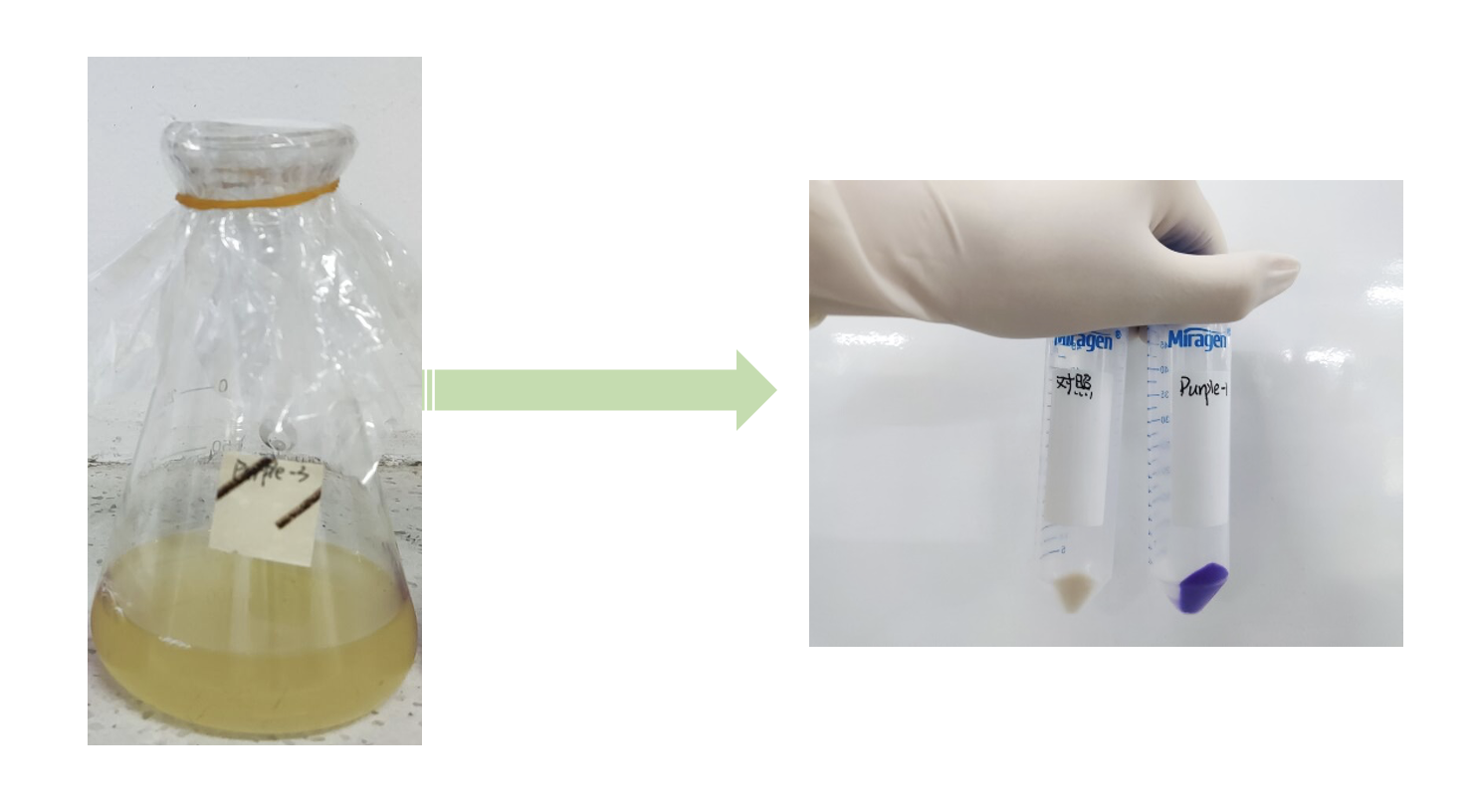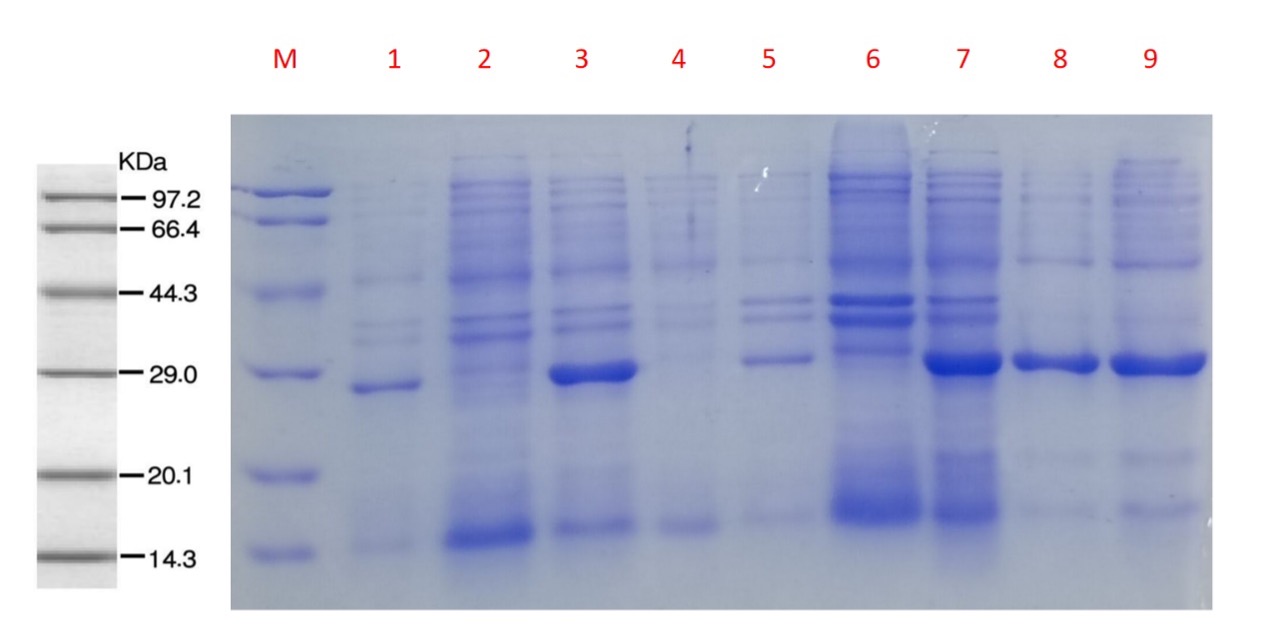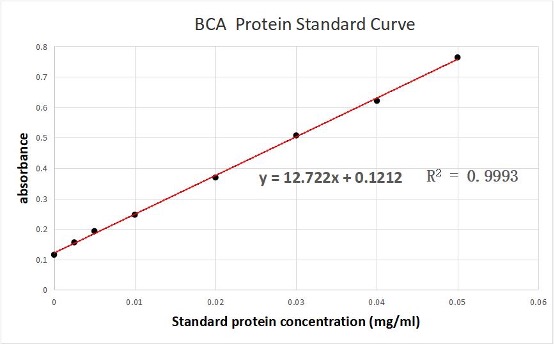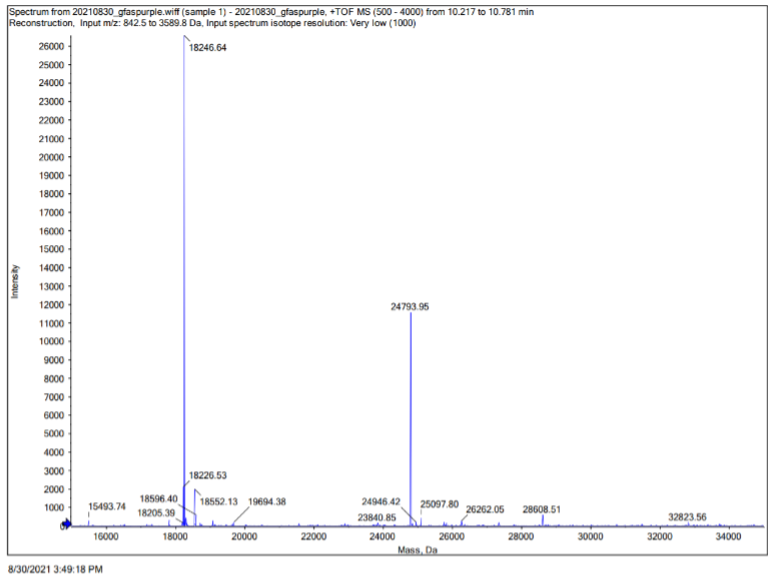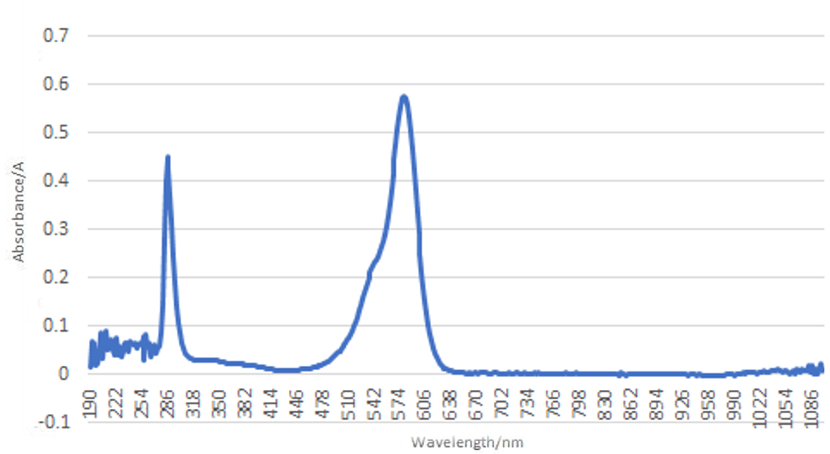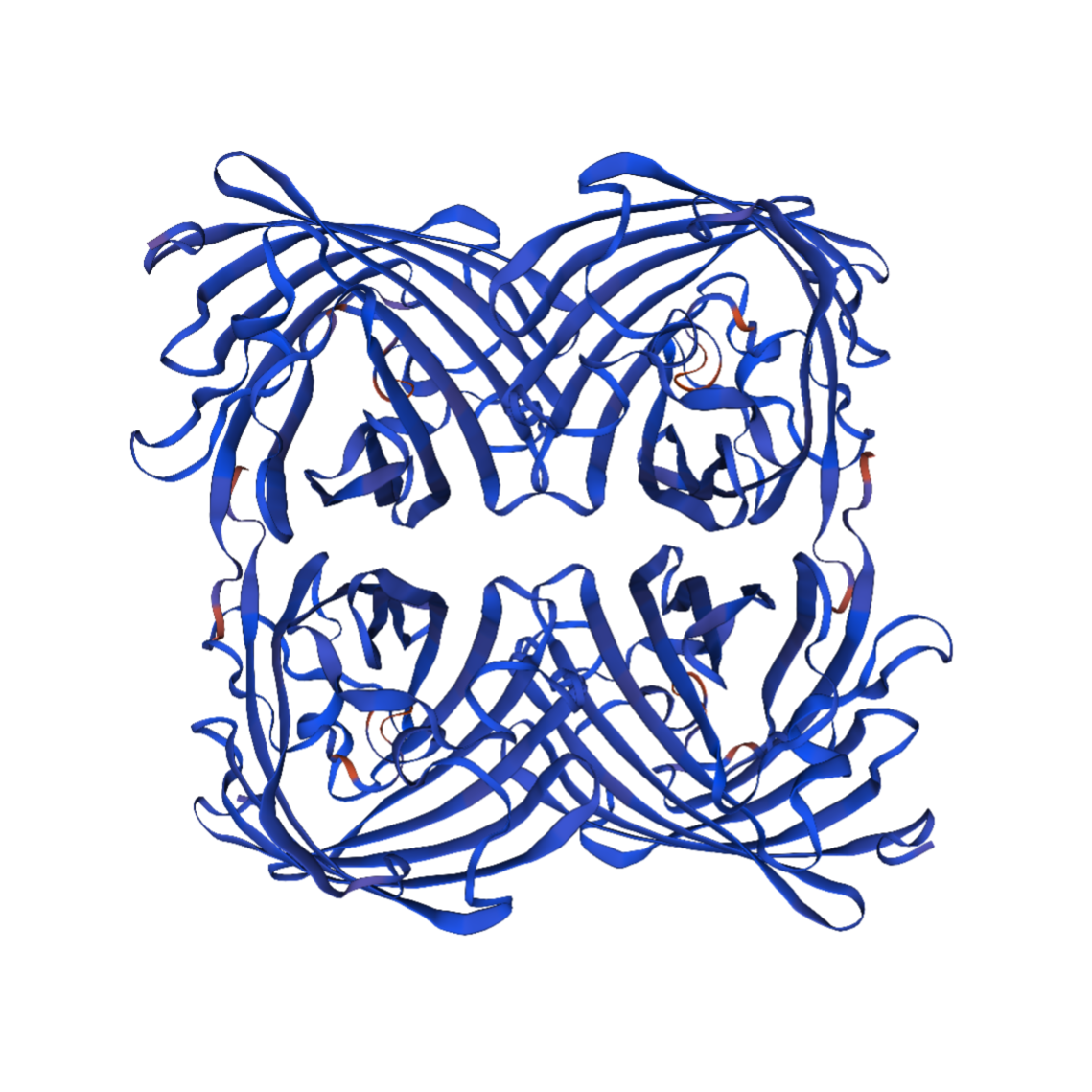Difference between revisions of "Part:BBa K1033918"
(→NJTech_China 2021’s Characterisation) |
|||
| (One intermediate revision by the same user not shown) | |||
| Line 9: | Line 9: | ||
===Source=== | ===Source=== | ||
''Galaxea fascicularis''. The protein was first extracted and characterized by Alieva et. al. under the name gfasCP (GenBank: DQ206394.1). This version is codon optimized for '' E coli'' by Genscript. | ''Galaxea fascicularis''. The protein was first extracted and characterized by Alieva et. al. under the name gfasCP (GenBank: DQ206394.1). This version is codon optimized for '' E coli'' by Genscript. | ||
| + | |||
| + | ===Characterization=== | ||
| + | |||
| + | ==NJTech_China 2021’s Characterisation== | ||
| + | Group: NJTech_China iGEM 2021 | ||
| + | |||
| + | While most of our project was focused on Design and Construction of Synthetic Yeast-Microalgae Consortia for Biosynthesis of Phenylethanol, we were also interested in chromoproteins. Specifically, we characterized the expression of aeBlue and gfasPurple. | ||
| + | <br> | ||
| + | |||
| + | The gfasPurple sequence (Part:BBa_K1033918) optimized for E. coli was incorporated into E. coli BL21 for protein characterization and data measurement. We conducted a series of experiments to obtain new data of gfasPurple chromoprotein. | ||
| + | <br> | ||
| + | |||
| + | Methods: | ||
| + | <br> | ||
| + | SDS-PAGE, TOF-Mass Spectrometry, BCA (Bicinchoninic acid) method, full wavelength measurement and Swiss-Model. | ||
| + | |||
| + | <br> | ||
| + | Results | ||
| + | <p> </p> | ||
| + | [[File:NJTech_China_purple-1.png|width='100%' valign='top'| |center|thumb|550px|''<b>Fig.1</b> The fermentation broth of gfasPurple.   <b>Fig.2</b> The cell pellet collected after centrifugation.]] | ||
| + | <br> | ||
| + | Conclusion: The cell pellet was collected by harvesting 50mL culture after 24h of induction followed by centrifugation at 4 degrees and 6000 rpm for 10min. Then, we performed ultrasonic disruption and collected the supernatant after centrifugation. The protein was purified and collected through ultrafiltration and affinity chromatography. | ||
| + | |||
| + | <br> | ||
| + | <p> </p> | ||
| + | [[File:NJTech_China_purple-2.png|width='100%' valign='top'| |center|thumb|550px|''<b>Fig.3</b> SDS-PAGE of the chromoprotein gfasPurple.]] | ||
| + | <br> | ||
| + | 1· gfasPurple- The culture after IPTG induction. | ||
| + | <br> | ||
| + | 2· gfasPurple- The pellet after IPTG induction and ultrasound. | ||
| + | <br> | ||
| + | 3· gfasPurple- Supernatant after IPTG induction and sonication. | ||
| + | <br> | ||
| + | 4· gfasPurple- The culture without IPTG induction. | ||
| + | <br> | ||
| + | 5· gfasPurple- The pellet without IPTG induction after ultrasound. | ||
| + | <br> | ||
| + | 6· gfasPurple- Supernatant sample without IPTG induction after sonication. | ||
| + | <br> | ||
| + | 7· gfasPurple- Protein sample after the ultrafiltration (diluted 20 times). | ||
| + | <br> | ||
| + | 8· gfasPurple- Purified protein sample. | ||
| + | |||
| + | <br> | ||
| + | Conclusion: The protein gel preliminarily proved that the molecular mass of the gfasPurple protein was correct, which is consistent with the expected molecular mass of gfasPurple protein (the molecular mass of gfasPurple protein is about 26.5 kDa). Compared with lane 5, 6, and 7, lanes 1, 2, 3 and 4 indicate that more gfasPurple protein can be obtained with IPTG induction. As is shown in lane 8, the concentration of protein was increased after ultrafiltration concentration. Lane 9 shows that the purification effect of protein after nickel affinity chromatography was better, and the impurity protein was less than before affinity chromatography. In conclusion, it can be seen that our expression and purification strategy is effective. | ||
| + | |||
| + | <br> | ||
| + | <p> </p> | ||
| + | [[File:NJTech_China_aeBlue-3.png|width='100%' valign='top'| |center|thumb|550px|''<b>Fig.4</b> BCA Protein Standard Curve.]] | ||
| + | <br> | ||
| + | We used the BCA (Bicinchoninic acid) method to measure the concentration of gfasPurple protein. | ||
| + | <br> | ||
| + | The concentration of gfasPurple chromoprotein was 0.2494 mg/ml. | ||
| + | <br> | ||
| + | The standard protein curve fitting equation (R2=0.9993) : | ||
| + | <br> | ||
| + | y=12.722x+0.1212 | ||
| + | <br> | ||
| + | It comes out that: | ||
| + | <br> | ||
| + | The concentration of gfasPurple is 0.2494 mg/ml. | ||
| + | |||
| + | <br> | ||
| + | <p> </p> | ||
| + | [[File:NJTech_China_purple-3.png|width='100%' valign='top'| |center|thumb|550px|''<b>Fig.5</b> TOF MS of gfasPurple.]] | ||
| + | <br> | ||
| + | |||
| + | Conclusion : We performed a Time of Flight Mass Spectrometer on the purified HIS-tagged gfasPurple protein. The predicted molecular mass of this protein is about 24.8KDa. The result of TOF-Mass Spectrometry showed that the specific molecular mass of gfasPurple protein is 24.793kDa (the value of the sharpest peak is shown as the molecular mass of gfasPurple protein). Moreover, The highest peak was at 18.246KDa, probably because the protein was degraded during transportation without strict fourth degree insulation. | ||
| + | |||
| + | <br> | ||
| + | <p> </p> | ||
| + | [[File:NJTech_China_purple-4.png|width='100%' valign='top'| |center|thumb|550px|''<b>Fig.6</b> Absorption spectrum of gfasPurple(190-1100nm).]] | ||
| + | <br> | ||
| + | |||
| + | gfasPurple protein full-wavelength scan profile : | ||
| + | <br> | ||
| + | 1-286nm 0.449A | ||
| + | <br> | ||
| + | 2-1044nm 0.010A | ||
| + | <br> | ||
| + | 3-580nm 0.575A | ||
| + | <br> | ||
| + | 4-1098nm 0.021A | ||
| + | |||
| + | Conclusion : The full-wavelength scan of gfasPurple protein shows that the strongest absorption. peak of gfasPurple protein occurs at 580nm. | ||
| + | <br> | ||
| + | <br> | ||
| + | |||
| + | Structural modeling results of the gfasPurple protein based on Swiss-Model | ||
| + | |||
| + | <br> | ||
| + | <p> </p> | ||
| + | [[File:NJTech_China_purple-5.png|width='100%' valign='top'| |center|thumb|550px|''<b>Fig.7-1</b> The results of the homology and structural modelling protein gfasPurple.]] | ||
| + | <br> | ||
| + | <p> </p> | ||
| + | [[File:NJTech_China_purple-6.png|width='100%' valign='top'| |center|thumb|550px|''<b>Fig.7-2</b> The 3D model of the homology and structural modelling protein gfasPurple.]] | ||
| + | <br> | ||
| + | |||
| + | Conclusion: We used Swiss-Model to simulate the three-dimensional structure of gfasPurple protein. The above figures showed the modeling result of Swiss-Model. | ||
| + | |||
| + | <br> | ||
===References=== | ===References=== | ||
Latest revision as of 10:53, 2 October 2021
gfasPurple, purple chromoprotein (incl RBS)
This chromoprotein from the coral Galaxea fascicularis, gfasPurple (also known as gfasCP), naturally exhibits strong color when expressed. The protein has an absorption maximum at 577 nm giving it a purple color visible to the naked eye. Compared to many other chromoproteins, such as amilCP (BBa_K592009), amilGFP (BBa_K592010), spisPink (BBa_K1033932), asPink (BBa_K1033933) and aeBlue (BBa_K864401), the color development is slower. The color is readily observed in both LB or on agar plates after 24-48 hours of incubation. The protein gfasPurple is closely related to amilCP (BBa_K592009) and has significant sequence homologies with proteins in the GFP family.
Usage and Biology
This part is useful as a reporter.
Source
Galaxea fascicularis. The protein was first extracted and characterized by Alieva et. al. under the name gfasCP (GenBank: DQ206394.1). This version is codon optimized for E coli by Genscript.
Characterization
NJTech_China 2021’s Characterisation
Group: NJTech_China iGEM 2021
While most of our project was focused on Design and Construction of Synthetic Yeast-Microalgae Consortia for Biosynthesis of Phenylethanol, we were also interested in chromoproteins. Specifically, we characterized the expression of aeBlue and gfasPurple.
The gfasPurple sequence (Part:BBa_K1033918) optimized for E. coli was incorporated into E. coli BL21 for protein characterization and data measurement. We conducted a series of experiments to obtain new data of gfasPurple chromoprotein.
Methods:
SDS-PAGE, TOF-Mass Spectrometry, BCA (Bicinchoninic acid) method, full wavelength measurement and Swiss-Model.
Results
Conclusion: The cell pellet was collected by harvesting 50mL culture after 24h of induction followed by centrifugation at 4 degrees and 6000 rpm for 10min. Then, we performed ultrasonic disruption and collected the supernatant after centrifugation. The protein was purified and collected through ultrafiltration and affinity chromatography.
1· gfasPurple- The culture after IPTG induction.
2· gfasPurple- The pellet after IPTG induction and ultrasound.
3· gfasPurple- Supernatant after IPTG induction and sonication.
4· gfasPurple- The culture without IPTG induction.
5· gfasPurple- The pellet without IPTG induction after ultrasound.
6· gfasPurple- Supernatant sample without IPTG induction after sonication.
7· gfasPurple- Protein sample after the ultrafiltration (diluted 20 times).
8· gfasPurple- Purified protein sample.
Conclusion: The protein gel preliminarily proved that the molecular mass of the gfasPurple protein was correct, which is consistent with the expected molecular mass of gfasPurple protein (the molecular mass of gfasPurple protein is about 26.5 kDa). Compared with lane 5, 6, and 7, lanes 1, 2, 3 and 4 indicate that more gfasPurple protein can be obtained with IPTG induction. As is shown in lane 8, the concentration of protein was increased after ultrafiltration concentration. Lane 9 shows that the purification effect of protein after nickel affinity chromatography was better, and the impurity protein was less than before affinity chromatography. In conclusion, it can be seen that our expression and purification strategy is effective.
We used the BCA (Bicinchoninic acid) method to measure the concentration of gfasPurple protein.
The concentration of gfasPurple chromoprotein was 0.2494 mg/ml.
The standard protein curve fitting equation (R2=0.9993) :
y=12.722x+0.1212
It comes out that:
The concentration of gfasPurple is 0.2494 mg/ml.
Conclusion : We performed a Time of Flight Mass Spectrometer on the purified HIS-tagged gfasPurple protein. The predicted molecular mass of this protein is about 24.8KDa. The result of TOF-Mass Spectrometry showed that the specific molecular mass of gfasPurple protein is 24.793kDa (the value of the sharpest peak is shown as the molecular mass of gfasPurple protein). Moreover, The highest peak was at 18.246KDa, probably because the protein was degraded during transportation without strict fourth degree insulation.
gfasPurple protein full-wavelength scan profile :
1-286nm 0.449A
2-1044nm 0.010A
3-580nm 0.575A
4-1098nm 0.021A
Conclusion : The full-wavelength scan of gfasPurple protein shows that the strongest absorption. peak of gfasPurple protein occurs at 580nm.
Structural modeling results of the gfasPurple protein based on Swiss-Model
Conclusion: We used Swiss-Model to simulate the three-dimensional structure of gfasPurple protein. The above figures showed the modeling result of Swiss-Model.
References
[http://www.ncbi.nlm.nih.gov/pubmed/18648549] Alieva, Naila O., et al. "Diversity and evolution of coral fluorescent proteins." PLoS One 3.7 (2008): e2680.
Sequence and Features
- 10COMPATIBLE WITH RFC[10]
- 12COMPATIBLE WITH RFC[12]
- 21COMPATIBLE WITH RFC[21]
- 23COMPATIBLE WITH RFC[23]
- 25COMPATIBLE WITH RFC[25]
- 1000COMPATIBLE WITH RFC[1000]

